#San Juan National Historic Site
Explore tagged Tumblr posts
Text

San Juan National Historic Site, San Juan, Puerto Rico
55 notes
·
View notes
Text
Underneath a battle shrine where Filipinos took a stand against Spanish colonial rule lies one of the largest underground reservoirs in the world. Made of volcanic tuff, the underground reservoir held water carried over the waterworks system from the Marikina River before being distributed to various fountains and hydrants in Manila. It was part of the larger Carriedo waterworks designed by Genaro Palacios and built from 1878 to 1882. The infrastructure project was named after Francisco Carriedo y Peredo, a Spanish official who bequeathed a grant to the City of Manila in 1733 to build a water system to support the city's burgeoning population of 300,000 people.
When El Deposito was still functioning, it had a capacity of 56,000 cubic meters. Ventilation shafts kept the water fresh and free from contamination. The reservoir is located under the hill, its vast central channel connects to 25 smaller chambers, each measuring five meters high and three meters wide. As part of the Carriedo Waterworks, the reservoir also supplied various hydrants and fountains in Manila. Five kilometers of cast iron pipes transport water from the Marikina River.
The reservoir played a critical role in various chapters of the country's history including the Battle of San Juan del Monte on August 30, 1896, which has been touted as the first battle of the Philippine Revolution.
El Deposito was also used as an armory during American and Japanese rule, a sanatorium for tuberculosis patients, an armory, and a firing range. It was chosen as the site of a national shrine inaugurated in 1973.
Over time El Deposito has fallen into decay. In 2016, an archaeological team conducted an assessment and excavation and two years later the National Historical Commission of the Philippines began cleaning up the site. The initial opening for 2020 was derailed by the COVID-19 pandemic, but it finally opened to the public on November 30, 2023.
11 notes
·
View notes
Text
Puerto Rican Rock Art, Part 2
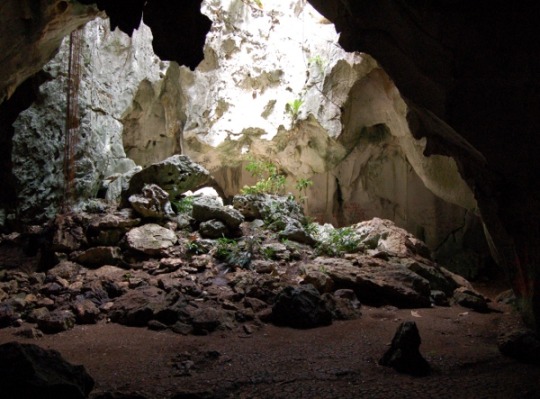
Hello and welcome to part 2 of my Puerto Rican Rock Art project! I will mostly be talking about Cueva Lucero (pictured above). I may mention other caves as well, just because there aren't many papers written about this specific cave. There are many others since about 81% of rock art found on the island is found in caves (Dubelaar 1994). I imagine it's just easier to talk about all the caves as a whole since they were all used similarly.
Cueva Lucero can be found in Juana Diaz in Puerto Rico. (Not from references).

However, due to fears of vandalism, the cave's exact location isn't listed in the National Register of Historic Places. In this same form, Cueva Lucero is deemed as important due to all the art found in it, this art shows us a part of the past we could have never seen without it. It is thought to be a place of religion or as a ceremonial site (Rodriguez et al, 2008). This cave was used around 600-1500 C.E., and represents mostly pre-Hispanic times and contains around 100 rock art images. That makes itself one of the best examples of pictographs in Puerto Rico (Rodriguez et al, 2008). While it has plenty of pictographs, it has petroglyphs as well.
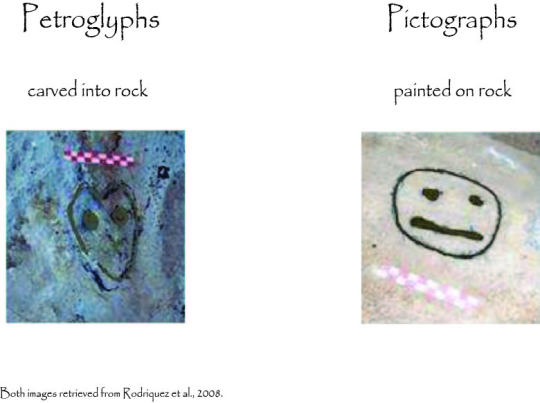
The difference between petroglyphs and pictographs are that one is painted, and one is carved imagery. I included an example above.
There are three different types of landscapes that both these styles show up in:
A. Caves and rock shelters on the coast, created by the waves.
B. Caves and rock shelters found in the mountains.
C. Riverbanks and riverbeds.
As well, Puerto Rico has an extra type:
D. The petroglyphs found in Puerto Nuevo. They are engraved in flat sandstone ledge that run parallel to the coast (Dublelaar 1994). Pictured below.
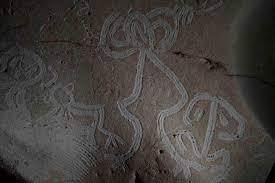

Rock paintings found in Puerto Rico can be monochrome, bichrome and polychrome (Dubelaar 1994). They also can be found in a couple colors as well. Red, white, orange and black were most commonly used (Hayward et. al., 2009).
Cueva Lucero falls under type B, has most, if not, only monochrome paintings. Most are painted using the color black.
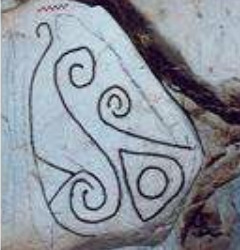
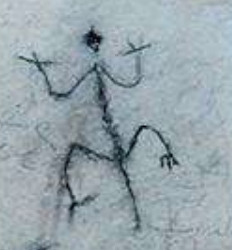

Here, you also see a lot of circles being used in their art. Obviously, using circles so much does suggest that the shape has importance for the community (Fewkes 1903). It can be seen as a sign of unity, which, is found in many other indigenous communities. Here are some examples of circle art found in Cueva Lucero.
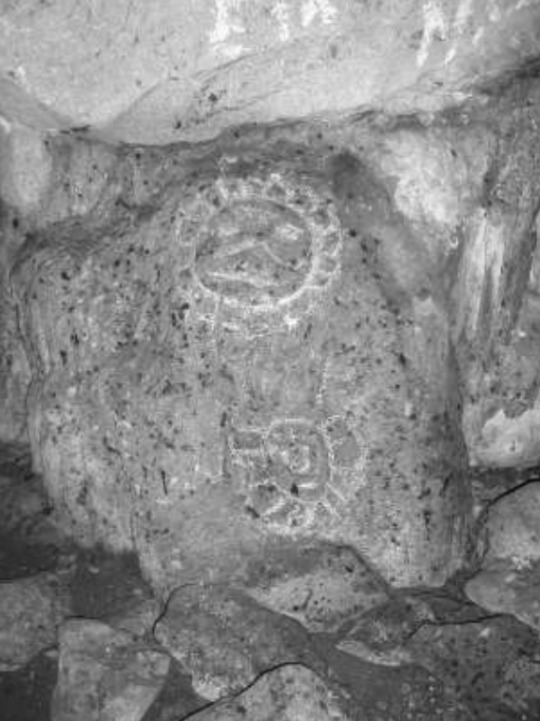

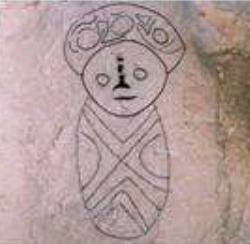


Lots of circles.
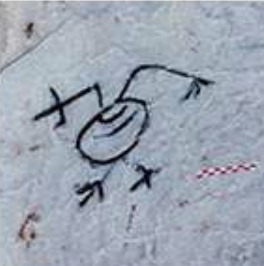

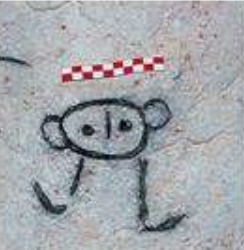
That is about it for this cave. Cueva Lucero holds valuable knowledge about the past. Without it, the other caves, we wouldn't have been able to obtain as much knowledge from our Taino ancestors as we do now. This goes to show, these old paintings and carvings, sites we find on the island (sites where people lived, hunting sites), are vital to understanding our history.
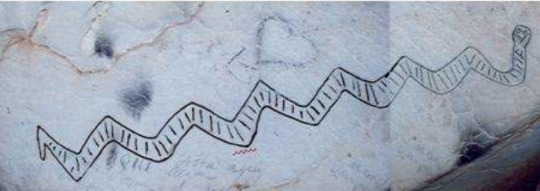
All photos (unless otherwise stated) are pictures from Cueva Lucero. All but the very first photo are from Rodriguez et al. 2008.
My references:
Dubelaar, C. N. 1994. Prehistoric rock art in Puerto Rico. Latin American Indian Literatures Journal, 10(1): 78–82.
Fewkes, J. Walter. “Prehistoric Porto Rican Pictographs.” American Anthropologist 5, no. 3 (1903): 441–67. http://www.jstor.org/stable/659123.
Hayward, M. H., Roe, P. G., Cinquino, M. A., Alvarado Zayas, P. A. and Wild, K. S. 2009. “Rock art of Puerto Rico and the Virgin Islands”. In Rock Art of the Caribbean, Edited by: Hayward, M. H., Atkinson, L. G. and Cinquino, M. A. 115–136. Tuscaloosa: University of Alabama Press.
Lace, Michael J. “Anthropogenic Use, Modification, and Preservation of Coastal Cave Resources in Puerto Rico.” The Journal of Island and Coastal Archaeology, vol. 7, no. 3, 2012, pp. 378–403., https://doi.org/10.1080/15564894.2012.729011.
Rodriguez, Yasha N. and Pedro Alvarado Zayas. 2008. "Cueva Lucero." National Register of Historic Places Registration Form. On file at Puerto Rico State Historic Preservation Office at San Juan, Puerto Rico.
Rouse, I. 1992. The Tainos: Rise and Decline of the People Who Greeted Columbus, New Haven: Yale University.
#archaeology#anthropology#cave#cave art#cave paintings#art#rock art#taino#indigenous peoples#pictographs#petroglyphs#colonialism#colonialization#university#school project#blog#puerto rico#grug#monochrome#mountain#caribbean#circles#frog#bird#references#little guys
31 notes
·
View notes
Text
Leaders of the Navajo Nation, a federally-recognized tribe in the southwest, are heavily criticizing the Biden administration for its action last week banning oil and gas leasing impacting their citizens.
In a highly-anticipated action last week, Interior Secretary Deb Haaland finalized a ban on fossil fuel leasing within 10 miles of the Chaco Culture National Historical Park located near San Juan County, New Mexico. While she said the move would protect the sacred and culturally significant site, Navajo leaders have argued it will wreak economic devastation on tribal members who rely on leasing the land for income.
"I really am emotionally distraught for our constituents that have been impacted by this," Brenda Jesus, who chairs Navajo Nation Council's Resources & Development Committee, told Fox News Digital in an interview.
"Since I've entered the legislative body for my Navajo people, I've listened to a lot of constituents out in that area and, you know, it's just emotional distress, psychologically as well, that they've talked about this – it really disturbs me to know how much more of a hardship that these folks are going to be experiencing out there," she said.
On Wednesday, Jesus led a delegation of Navajo tribal leaders who met with lawmakers on Capitol Hill, making their case against the Department of the Interior's (DOI) action and for a compromise solution. The tribe previously backed a five-mile buffer zone to protect the site while ensuring future drilling on oil-rich allotments.
Navajo Nation leaders have also warned that the federal government failed to properly consult them on the action. They said Haaland never seriously considered their compromise solution and potentially neglected her legal duty to protect rights of Navajo allottees.
"The proper government-to-government tribal consultation has never really taken place at all," Jesus told Fox News Digital. "We're just really advocating on behalf of our constituents. That wasn't really considered – tribal sovereignty."
BIDEN ADMIN HIT WITH LAWSUITS FOR HIDING COMMUNICATIONS INVOLVING CABINET SECRETARY’S DAUGHTER
Overall, the ban amounts to a withdrawal of approximately 336,404 acres of public lands from mineral leasing near Chaco Canyon site.
There are currently 53 Indian allotments located in the so-called 10-mile buffer zone around Chaco Canyon, generating $6.2 million per year in royalties for an estimated 5,462 allottees, according to Navajo Nation data. In addition, there are 418 unleased allotments in the zone that are associated with 16,615 allottees.
According to the Western Energy Alliance, an industry group that represents oil and gas producers in the area, Navajo members will lose an estimated $194 million over the 20 years the action is in place.
"A lot of the allottees themselves rely on these royalties for their livelihood," Carlyle Begay, the federal and state government affairs adviser for the Navajo Nation Council, told Fox News Digital. "Instead of providing our communities and these people directly the opportunity to provide for themselves, they are providing no solutions in how these families are going to compensate for these income losses."
In addition, Navajo Nation President Buu Nygren blasted Haaland for announcing the leasing ban on Treaty Day, which celebrates the signing of the 1868 treaty that formally began the government-to-government relationship between U.S. and the Navajo Nation.
"The Secretary’s action undermines our sovereignty and self-determination," Nygren said in a statement. "Despite my concerns and denunciation, the Department of Interior has moved forward, which is highly disappointing. Secretary Haaland’s decision impacts Navajo allottees but also disregards the tribe’s choice to lease lands for economic development."
NATIVE AMERICAN TRIBES DEPENDENT ON FOSSIL FUEL RESOURCES RIP BIDEN ADMIN FOR DOUBLE STANDARD
He added that the decision "jeopardizes future economic opportunities" and places thousands of Navajo allottees in "dire financial constraints."
Troy Eid, a lawyer who represents Navajo Nation allottees and a former U.S. attorney who was appointed to chair the federal Indian Law and Order Commission, said his clients were prepared to file a lawsuit against Haaland over the action.
"These are among some of the poorest zip codes in the United States. The secretary has decided to steal their mineral rights and it is theft," Eid told Fox News Digital in an interview. "These are rights that were guaranteed to them by federal law in the Hoover administration and the very opening months of the Roosevelt administration – these allotments."
"This order to withdraw land in violation of a Navajo Nation compromise that has been out there for at least two and a half years to come up with a buffer zone that will work for everybody is absolutely outrageous," he continued. "The secretary chose to do this on Treaty Day, our Navajo Nation holiday. She's looking at a lawsuit that I think she's going to have to take very seriously."
While DOI stated Friday that the action won't impact existing leases or production on those leases, Eid and other opponents of the buffer zone said it would indirectly make Indian-owned allotments worthless.
Because drilling on the Navajo allotments requires horizontal crossings that pass through federal land impacted by the ban, the action effectively ends all drilling in the area, he said.
NATIVE AMERICAN TRIBE CONDEMNS BIDEN ADMIN EFFORT TO BAN OIL, GAS LEASING ON LANDS
"If they ban land development on all federal land, you can't have any more continued developments on our parcels. You wind that down, they would get lease payments for the duration of the leases that they have now, but they could no longer get royalties under what she's done," Eid told Fox News Digital.
"The bulk of the compensation that they earn right now – they, the allottees – from their mineral rights are royalties paid by the companies that are developing the oil and have been, for the most part, since the 1950s. There won't be any new development," he added. "There'll be no economic reason or ability for companies to develop the land."
The allotments date back to the early 1900s, when the federal government awarded them to Navajo citizens as a consolation when the tribe's territory was downsized.
Republican lawmakers, meanwhile, said Haaland's action was part of the Biden administration's broader climate change agenda and argued Chaco Canyon is already protected. Rep. Harriet Hageman, R-Wyo., who chairs a House panel on Indian affairs, said it represented a "taking" of tribal lands and vowed congressional action.
"This afternoon I had the opportunity to meet with Navajo tribal leaders and discuss Chaco Canyon and Secretary Haaland’s radical activist decision to create an arbitrary buffer zone around this national park," Hageman told Fox News Digital on Wednesday, "a decision that should rightfully lie with Congress, not the Department of Interior."
"This buffer amounts to a taking of Navajo land, creating economic hardship that will ultimately take money away from much-needed education, medical and infrastructure projects – an estimated $1 billion in revenue," she continued. "The secretary has made this cruel decision without ever speaking with tribal leaders or allottees. We will do whatever we can to stop this taking – whether through my subcommittee or the upcoming appropriations process."
The DOI declined to comment.
#nunyas news#that's puttin them in a pickle#gonna piss people off no matter what now#should have just left things as they were#could blame trump then I think
19 notes
·
View notes
Text
Best Places To Visit In Puerto Rico With Family
Puerto Rico offers a range of family-friendly destinations that cater to both kids and adults. Here are some of the best places to visit in Puerto Rico with your family:
Old San Juan: Explore the colorful streets of Old San Juan, filled with historic sites, charming shops, and vibrant culture. Visit the impressive El Morro Fortress, enjoy a stroll along Paseo de la Princesa, and sample local treats like piraguas (shaved ice).
El Yunque National Forest: Embark on a family adventure in the lush rainforest of El Yunque. Hike to waterfalls, swim in natural pools, and learn about the unique flora and fauna of Puerto Rico.
Flamenco Beach, Culebra: Take a day trip to Culebra Island and visit Flamenco Beach, known for its pristine white sand and crystal-clear waters. Relax, swim, and snorkel together in this idyllic tropical paradise.
Bioluminescent Bay, Vieques: Experience the magic of a bioluminescent bay in Vieques. Take a nighttime kayak tour and witness the glowing waters teeming with microscopic organisms. It's a truly enchanting experience for the whole family.
Arecibo Observatory: Visit the world-famous Arecibo Observatory, home to the largest single-dish radio telescope. Learn about space exploration, astronomy, and engage in hands-on activities that will captivate both kids and adults.
Luquillo Beach: Spend a day at Luquillo Beach, a family-friendly beach with calm waters, facilities, and shaded picnic areas. Build sandcastles, play beach games, and enjoy the warm Caribbean sun.
These family-friendly destinations in Puerto Rico offer a mix of natural beauty, cultural experiences, and outdoor adventures that are sure to create lasting memories.
Keep Reading
#Puerto Rico#family#Old San Juan#El Yunque National Forest#Flamenco Beach#Bioluminescent Bay#Arecibo Observatory#Luquillo Beach
5 notes
·
View notes
Text
Intramuros, Manila
When visiting the Philippines, one should not forget to visit the walled city of Intramuros.
Known to be the settlement of the Spanish invaders for 333 years, this place have witnessed a lot of historical events of the country.
The most remarkable probably is the imprisonment site of the country's National Hero, José Rizal, in Fort Santiago.
The Intramuros Administration has established a museum dedicated to commemorate our National Hero. Here are some pictures I took when I visited the place with my boyfriend.
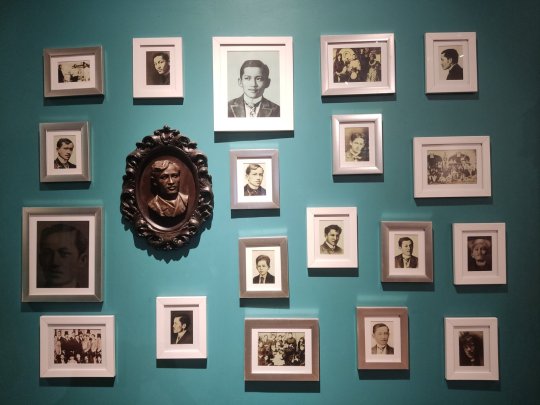
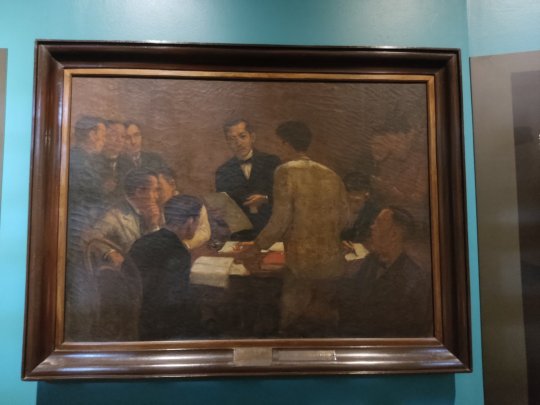
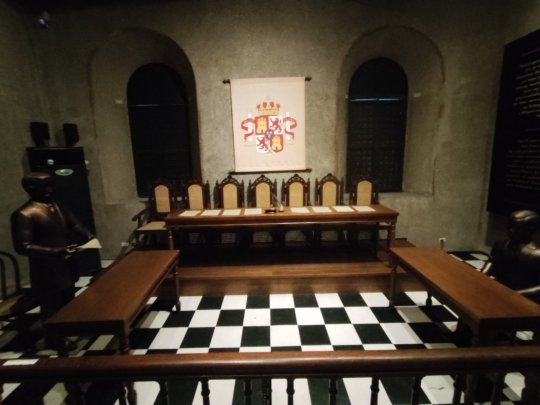
Of course, to make it worthwhile, we have also visited other historical structures like the Manila Cathedral and the San Agustin Church which are the only remaining out of the originally seven (7) churches that once stood within the walls.
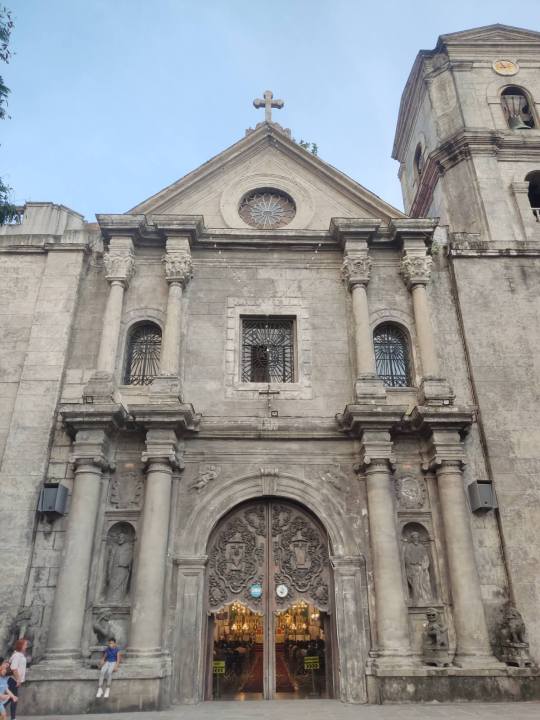
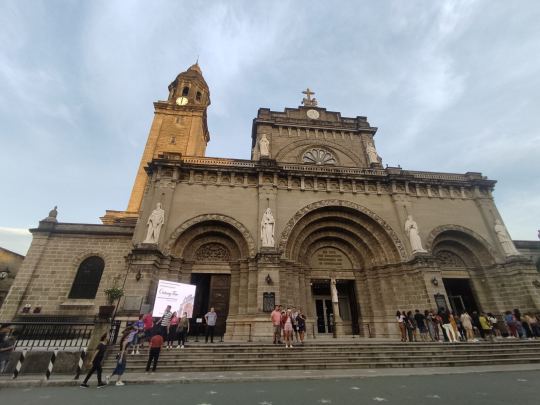
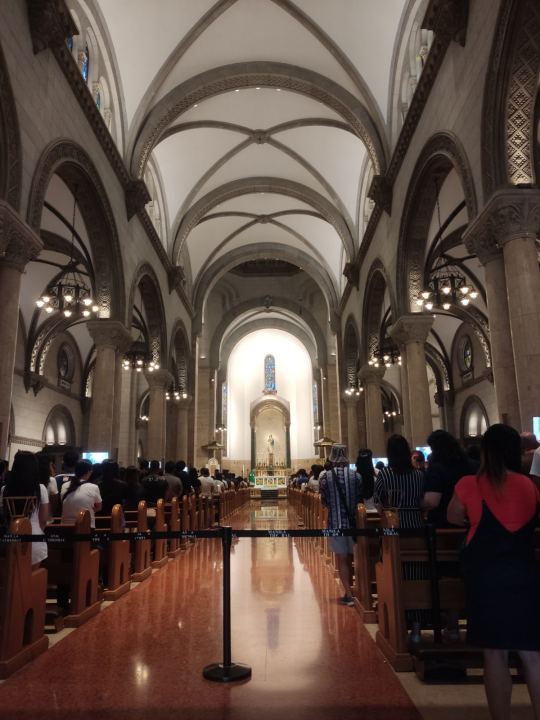
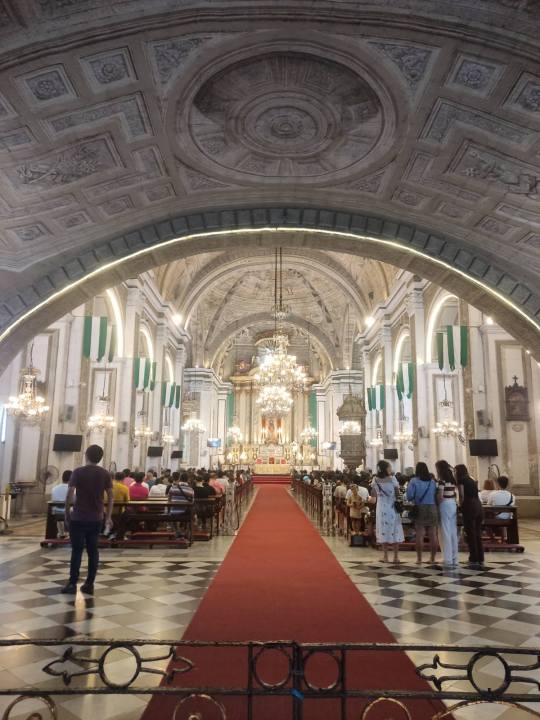
We have also walked on the walls and saw some of the known universities, Colegio de San Juan de Letran - the oldest college in the Philippines, and the Lyceum of the Philippines University - the only university founded by a Philippine president José Laurel.
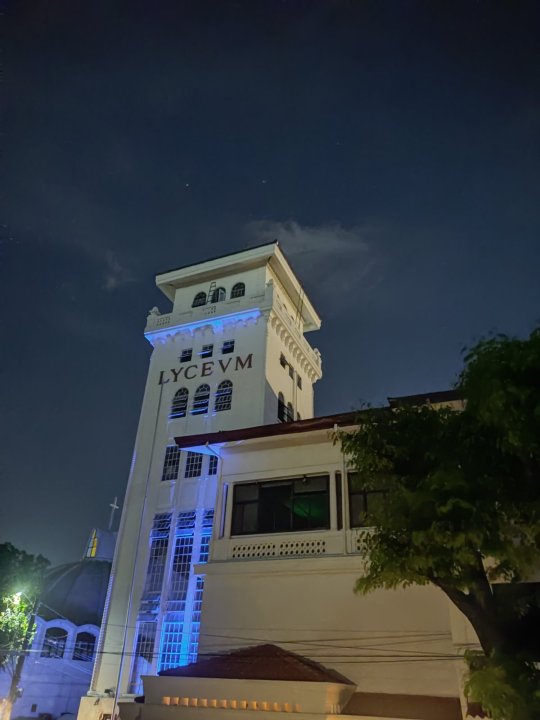
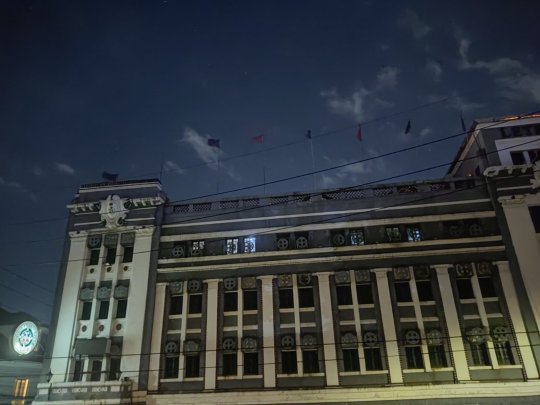
2 notes
·
View notes
Text
Welcome to my blog!
I spent a year in the Federal Emergency Management Agency (FEMA) Corps, a professional development and service program for young adults under the AmeriCorps National Civilian Community Corps (NCCC) umbrella. Both FEMA Corps and traditional NCCC involve working, living, and traveling around the United States in teams with a small living stipend. I chose FEMA Corps due to a greater interest in emergency management and disaster relief.
I wasn’t finding much recent firsthand information on FEMA Corps, so I decided to make this blog according to what I would have liked to know prior to joining. Be warned: some of it is a little dry. Birds are also a special interest of mine, so I’ll be sharing a lot about them, too.
List of blog entries: Round 1 Round 2 Round 3 Round 4
Information: FEMA Reservist Position Information Disaster Survivor Assistance: Just-In-Time Training Disaster Recovery Center: Just-In-Time Training Environmental Planning and Historic Preservation Cadre Disaster Aid in Alaska (Day 307)
Highlighted posts: A (pretty cool) site inspection in Caguas, PR (Day 122) Birding in San Juan, PR (Day 179) A road trip through California (Day 281) A trip to Forks, CA (Day 305) A road trip through Crater Lake, OR (Day 350)
I posted everything to a personal primary blog before realizing I should have put it all on a secondary blog. But now it's been reposted here. All of these posts can also be found on the WordPress site too.
2 notes
·
View notes
Text

The Castillo San Cristobal (1634-1783) has been part of the San Juan National Historic Site since 1949. In 1983 the fortifications were declared a UNESCO World Heritage Site.
3 notes
·
View notes
Text
Day 12, Mon June 8: Durango to Mancos to Cortez to Rico to Telluride and back, 366 km
My hotel serves breakfast, so I get to talk to some of the locals. As a result, I switch Telluride from a sidebar on tomorrow's ride to a full day trip today. Right choice. It turned out to be a spectacular day.
Durango sits at 6,522', pop 19,223 and is surrounded by massive mountains (San Juan range of the Rocky Mtns), unbeatable skiing and an historic small gauge railway, a vestige of its silver mining days.
I head out on Hwy 180 to Mancos (7,020', pop 1,221), the gateway to Mesa Verde National Park, home to 4,700 archeological sites and 600 cliff dwellings.
I pass through to Cortez (6,191', pop 8,855) located at the corners of Arizona, Colorado, New Mexico, and Utah.
From.there, I turn north on Hwy 145 to Rico (8,825', pop 347), obviously now a mere shadow from its silver mining heyday. With the elevation climb comes lower temperatures and rain. I find a sheltered awning and scramble beneath to put on my warm clothing and rain gear. As all bikers will attest, there is no such thing as bad weather, just bad clothing choices. Well, almost, as I pull out of Rico, the hail starts. It's not good on a sports bike. I consider turning around, but it drops off, only to start hailing again 15 minutes later as I climb higher towards Telluride. I white knuckle onwards, too close now to turn back.
It turns out to be the right decision. I explore my way through Telluride, then ride over to Mountain Village to catch the gondola ride over the top of the mountain back to Telluride. As it starts raining, I eat lunch on the gondola, enjoy the scenery, and look at the black clouds rolling in. Rather than linger when I get back, I head straight back, kit up, and get on the bike. Within minutes, the hail starts up again. It lasts about 20 minutes, bouncing off my helmet and smashing my knuckles, but finally, I make it back to the lower elevation of Rico where it turns to just plain rain.
Other than the stunning scenery and the winding roads, the trip back after that is comparatively peaceful. I celebrate by stopping in to explore and have dinner in Durango.
Someone was smiling down on me today. A spectacular ride, awesome scenery, a safe return, and $3.00 beer night in Durango. Life is good.

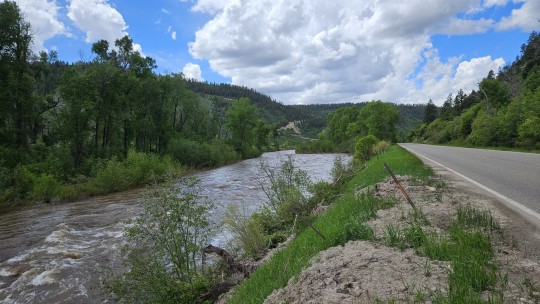

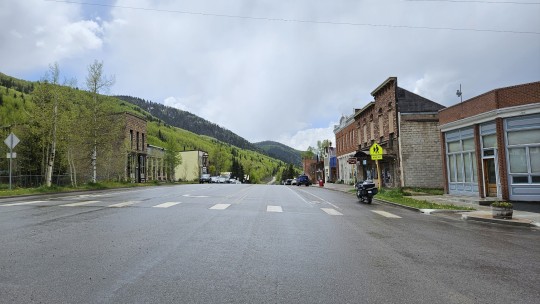





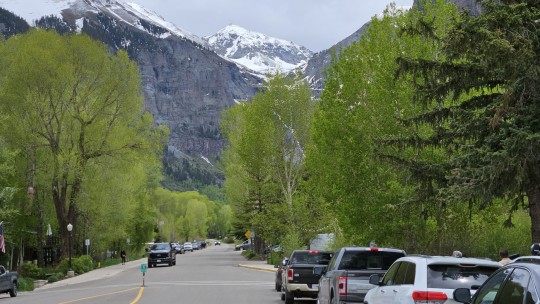
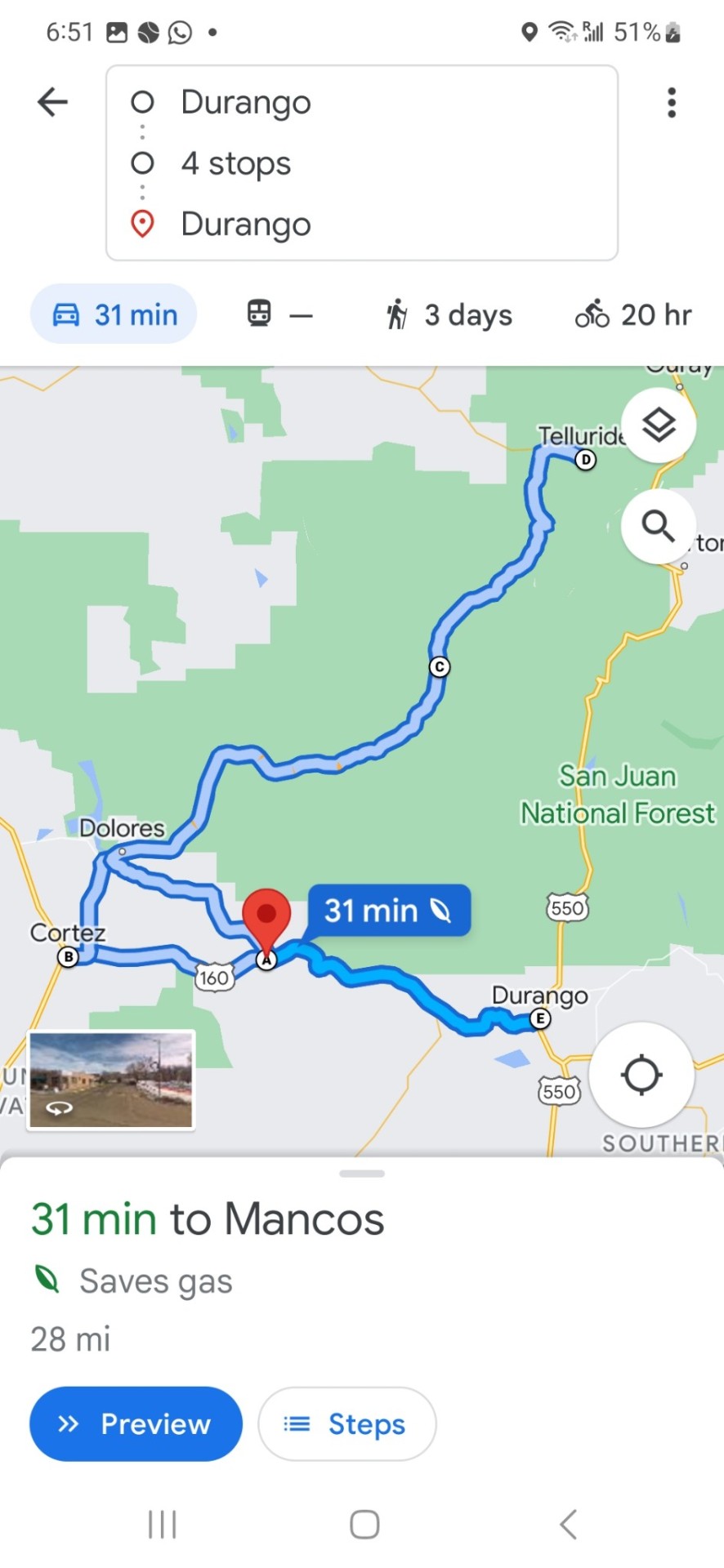
2 notes
·
View notes
Text
» La•Colonia 🇵🇷 Site Map
» La Mentalidad Boricua

Diosa Luna (Taíno Moon Goddess), Los Hermanos Guillén, Yamasá, República Dominicana. La Española was the first Spanish colony in the New World, preceding Puerto Rico by 15 years. It became independent twice, in 1844 from Haiti (which had invaded in 1822) and in 1865 from Spain (to which Santo Domingo had been restored by President Pedro Santana in 1861 due to bankruptcy). After 1865, Spain's colonies in the Americas were reduced to Cuba and Puerto Rico. Cuba obtained independence from Spain in 1898 and from the United States in 1902. Puerto Rico became a possession of the United States in 1898. "Of all Spanish colonial possessions in the Americas, Puerto Rico is the only territory that never gained its independence." Marisabel Brás, The Changing of the Guard: Puerto Rico in 1898
Site banner photo: a garita (colonial sentry box) of the Old San Juan Spanish fortress complex —which includes Castillo San Felipe del Morro (El Morro) and Castillo San Cristóbal, the largest Spanish fortification in the New World— keeps silent watch over the tropical Atlantic. Photo by Michellewint @ Wallpapercave.com
San Juan National Historic Site
National Park Service
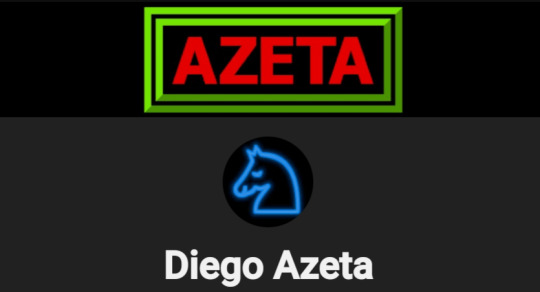
Diego Azeta has no actual physical existence in four-dimensional space-time. He is an imaginal cognitive framework emerging from abstract symbolic domains etched in textual, audial or visual substrates, oftentimes electronic. Diego, as a functional entity, interacts with the world as a cybernetic systems analyst.
📚 📜 🗿 🌐 🧭 💻 📱 🤖 ⚡ 🔆 🔊
The last of the European colonial possessions can shed much light on the social behaviors of countries the world over, including the former colonial powers themselves. It is often easier to diagnose the failings of other cultures than to critically examine those of your own. (This is the overlooked beam in thine eye judgment bias.)
Another key point illustrated here is the use of unfair policies that ruling powers impose on ethnicities and inchoate nations they control. (This is the might makes right political fallacy.) These extraneous conditions, often intended to crassly project colonial power, become psychosocially onerous and contribute to the erosion of the cultural fabric that sustains the moral traditions and norms of conduct of the colonial society.
The main point of the presentation, however, is to showcase the egregious irresponsibility of the colony's political and social leaders when they abdicate their patrimonial duty to demolish the mentality of submission and lead the people to freedom, not just from the colonizers but more importantly from the rank, metastasized corruption the colonial leaders and inhabitants have learned, adopted and further developed on their own. People are always responsible for the consequences of their deeds and attitudes.

Borikén Taíno Map c. 1508 —goodrusk.com
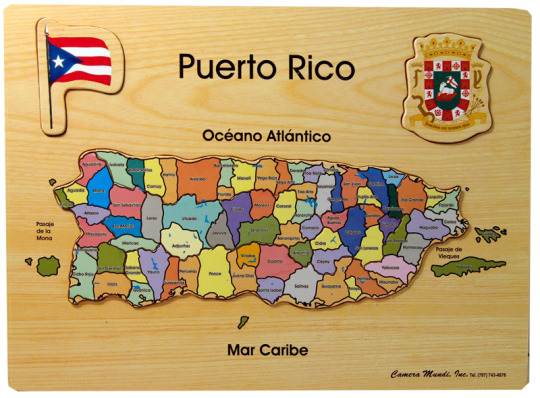
Puerto Rico's 78 municipalities (offshore islands not distanced to scale) —CameraMundi.com
Enjoy your visits here, my friends.


Brush up on the basics:
If opening these links in Chrome is objectionable to you, you can point to and hover on the link which copies the url, and paste it on your favorite web browser.
What is a logical fallacy? - Grammarly
What is critical thinking? - Monash University
{Breve Historia de Puerto Rico - EnciclopediaPR.org
Brief History of Puerto Rico - EncyclopediaPR.org}
History of Puerto Rico - Britannica
{Historia de Puerto Rico - Wikipedia
History of Puerto Rico - Wikipedia}
Puerto Rico - Britannica
Puerto Rico - CIA World Factbook
Puerto Rico - NationsOnline.org
Puerto Rico - Wikipedia (English, Español)
Puerto Rico - WorldData.info
Colonialism - National Geographic
Colonialism - Wikipedia
Colonialism - Stanford Encyclopedia of Philosophy

Columbus lands in Guanahaní (San Salvador), 12 October 1492. Image: PBS Learning Media/GBH. Columbus also discovered Borikén (San Juan Bautista, later Puerto Rico) on his second voyage on 19 November 1493.

Juan Ponce de León y el cacique Agüeybaná en Borikén en 1508.

-> Afírmalo con integridad en tus obras y proceder.
“Los buenos somos más.” 🇵🇷
— Profesora B. López
Los corruptos serán los menos. ☣️
⚙️ Settings: This blog is best viewed on the Tumblr app with the color palette set to dark mode.
Original author material in La•Colonia blog is © 2023-2024 Diego Azeta. All rights reserved. Derechos reservados. Downloading this material to the user's device for offline, non-commercial, personal reading use is authorized.
Puerto Rico is officially bilingual. So is this blogsite. Check out free online translation options at HelpDeskGeek.com
❤️ 🇵🇷 🦜

Esto va a cambiar. Ánimo, boricua.
» Site map
2 notes
·
View notes
Photo

Castillo San Cristóbal is a fortress in San Juan, Puerto Rico. It was built by the Spanish to protect against land-based attacks on the city of San Juan. It is part of San Juan National Historic Site. Built 1783, Castillo San Cristóbal is the largest fortification built by the Spanish in the New World. When it was finished in 1783, it covered about 27 acres of land and partly encircled the city of San Juan. Entry to the city was sealed by San Cristóbal's double gates. After close to a hundred years of relative peace in the area, part of the fortification (about a third) was demolished in 1897 to help ease the flow of traffic in and out of the walled city. Source: wikipedia . #castillosancristobal #fortsancristóbal #historicsites #history #springbreak2023 #spring2023 #puertorico #exploringpuertorico #destination #discoverpuertorico #vacation #sanjuan #travel #destination #lifeofadventures #sanjuannationalhistoricsite (at Castillo San Cristóbal, San Juan, Puerto Rico) https://www.instagram.com/p/CqTCb90OwgR/?igshid=NGJjMDIxMWI=
#castillosancristobal#fortsancristóbal#historicsites#history#springbreak2023#spring2023#puertorico#exploringpuertorico#destination#discoverpuertorico#vacation#sanjuan#travel#lifeofadventures#sanjuannationalhistoricsite
2 notes
·
View notes
Text
A Cultural and Scenic Tour: Exploring the City’s Best Highlights

A coastal city steeped in history and brimming with natural beauty, this destination offers the perfect blend of culture and scenic charm. From its iconic landmarks to hidden treasures, every corner tells a story. Guided by the thoughtful recommendations of Mohamed Haffar, this journey takes you through the must-see highlights that capture the essence of this vibrant city.
Morning: Discover Historical Foundations
Begin your day with a visit to Old Town, a district celebrated as the birthplace of California. With its well-preserved adobe buildings, bustling marketplaces, and lively performances, Old Town immerses visitors in the region’s rich heritage. Explore the Old Town State Historic Park, where museums and exhibits bring history to life, showcasing the early days of settlement and the blending of cultures.
A short drive away, Balboa Park awaits with its architectural grandeur and lush gardens. Known for its Spanish Colonial Revival buildings, the park is also home to world-class museums and theaters. Highlights include the San Diego Museum of Art and the Natural History Museum, which provide a deep dive into art, science, and local history.
Midday: A Blend of Culture and Cuisine
As the day transitions, indulge in a culinary journey that reflects the area’s diverse heritage. The Gaslamp Quarter offers an eclectic mix of dining options, where you can enjoy farm-to-table dishes, international flavors, or classic seafood. The district’s historic charm and modern energy make it an ideal spot for a stylish midday break.
Alternatively, head to Little Italy, a vibrant neighborhood known for its culinary excellence. Stroll through its streets lined with trendy cafes and artisan markets, savoring fresh pasta or gelato that captures the essence of Italian-American culture.
Afternoon: Scenic Marvels and Iconic Landmarks
In the afternoon, visit Cabrillo National Monument on the Point Loma Peninsula. This landmark honors Juan Rodríguez Cabrillo’s historic landing and offers panoramic views of the ocean and city skyline. The site’s hiking trails and tide pools provide opportunities to connect with the region’s natural beauty while learning about its maritime history.
For those seeking an urban adventure, explore the unique energy of Little Italy or the boutique-lined streets of La Jolla. Both neighborhoods blend charm with sophistication, making them ideal for an afternoon of discovery. Mohamed Haffar San diego
Evening: A Sunset to Remember
As evening approaches, Sunset Cliffs Natural Park provides the perfect setting to unwind. Known for its dramatic coastline and breathtaking sunsets, the cliffs offer a serene escape from the day’s adventures. The vivid colors of the sunset reflecting off the waves create a magical moment that encapsulates the city’s natural beauty.
Conclude your day with a memorable dinner at one of the city’s renowned restaurants. Whether you choose fresh seafood by the coast or globally inspired dishes at a chic eatery, the dining scene promises a satisfying end to your cultural and scenic journey.
This city’s ability to merge cultural richness with natural splendor makes it a destination unlike any other. Each landmark, meal, and view offers a glimpse into its unique character, leaving visitors with unforgettable memories and a desire to return.
0 notes
Text
Flanked by an elementary school and a local shopping mall on the other side of the road, this looks like an ordinary site except for a prominent watchtower that seems to belong to another era. Indeed this tower, more than a century old, served as the entry point to the gunpowder depot that once held power over a nation that ached for freedom and liberty after three centuries of colonial rule.
When the Katipunan (officially the Kataastaasan Kagalang-galang na Katipunan ng mga Anak ng Bayan and abbreviated as the KKK) decided to rise against the colonial Spanish government, they targeted to strike the El Polvorin first because it would cut off one of the most important military depots—and provide them with supplies of their own. On August 29, 1896, the Katipuneros led by Andres Bonifacio attacked El Polvorin.
The battle is considered the first major battle of the Philippine Revolution, which led to Philippine independence from Spain in 1898.
Know Before You Go
On August 30, 2022, the Metropolitan Manila Development Authority (MMDA) and the San Juan City government inaugurated the El Polvorin Linear Park, built around the site of a historic Spanish-era gunpowder depot which is now within the San Juan Elementary School.
The watchtower is located just near the entrance of the school and is accessible 24 hours, directly in front of Puregold supermarket chain.
8 notes
·
View notes
Text
THANK YOU for Standing With Us to Protect Cats

In this season of love, giving, and community, we at Alley Cat Allies are endlessly grateful for our supporters, who help us protect cats and kittens like the community members they are!
When we say Cats Are CommunityTM, it is a powerful statement of these global truths: cats have lived alongside us for thousands of years, have a rightful place in our communities, and are beings with inherent value who deserve to live free of cruelty and deadly, misguided policies.
What makes a community one that truly protects cats like community? Here are the building blocks—city and county funding for critical resources like Trap-Neuter-Return (TNR), low-cost spay and neuter, and cat food banks; strong laws to fight cruelty and defend cats whether they live outdoors or indoors; and active community members advocating for cats.
Alley Cat Allies works on the ground, in court, and through our comprehensive online resources to bring these key policies and programs worldwide. Your generosity and compassion help us do it all! And when we achieve a brighter tomorrow for cats together, it will be something for which we can all truly be thankful.
Right now, we celebrate and give thanks for the victories of today. Because you stand with Alley Cat Allies…

Community cats in Puerto Rico are not being removed and killed right now. The United States National Park Service (NPS), which announced intention to eradicate cats from the San Juan National Historic Site late last year, planned to start ripping cats from their outdoor homes as early as October 1, 2024.
Alley Cat Allies’ legal efforts and refusal to back down forced the NPS to agree to halt all movement on its cruel plan until a federal court decision in 2025. Cats like Bella, Mufasina, and Llorin are still eating, sleeping, and playing amid the surf-swept rocks of their outdoor home because of our action (including our historic federal lawsuit)—and our supporters like you who made it possible.
Together, we are sending a clear message: Harmful action against cats will not stand unchallenged, no matter who carries it out.

Cats in Ohio are now officially protected under companion animal cruelty law. In a unanimous decision, the Ohio Supreme Court ruled this month that Ohio’s companion animal cruelty law (R.C. 959.131) protects ALL cats and dogs as “companion animals.” Alley Cat Allies filed an amicus brief in this case, which helped inform the Court’s decision.
This is a huge step forward! In the simplest terms, we helped the Ohio Supreme Court decide that the law protects both owned and unowned cats equally, and that animal cruelty against community cats is not lesser than cruelty against an owned cat. This will affect the outcome of cruelty cases across Ohio and ensure justice is truly served.
Our victory in Ohio is just one of many lifesaving legal wins for cats and their caregivers this year!

Advocates and caregivers can access care and resources for cats. Just yesterday, we launched our new Alley Cat Allies Community Resource Tool to help advocates like you protect the cats who are your community.
With a few clicks, you can find resources for cats in your area including low-cost spay and neuter clinics, cat food banks, and more.
This is how advocates find each other, communities connect, and cats’ lives are saved.

Cats across the United States and beyond are enjoying a meal this Thanksgiving. Just one Alley Cat Allies supported community cat food bank in Atlantic County, New Jersey, feeds around 600 cats per day! And that’s just one part of an initiative through which thousands more cats and kittens receive low-cost spay and neuter, TNR, and other needed veterinary care each quarter.

Cats continue to receive care in hurricane-impacted communities. Alley Cat Allies’ rapid response in the wake of Hurricanes Helene and Milton kept lifesaving resources for cats running with emergency generators, restocked supplies lost to flooding (including critical medications for cats), supported emergency treatments and surgeries for affected cats and kittens, and provided cat food resources for caregivers who may not have otherwise been able to afford them post-disaster. Cats like Padme, Halo, and Toffee were provided with lifesaving care and returned to their outdoor homes safe and sound.
And all of that is just within the last season!
What You Can Do to Help Cats on Thanksgiving
Thanksgiving is about celebrating family and community, and there’s no better time to remember that Cats Are Community and family members to many of us across the globe. More than that, we have the power to protect cats as we should all members of our communities.
So take some time to talk to your community about cats. Tell your family at the Thanksgiving table about TNR. Celebrate the cats in your life, and learn how to best care for them. Talk to your local leaders about humane programs that save cats’ lives rather than put them at risk. Share the Truth about Cats and set the record straight when disinformation threatens cats’ lives.
Your voice and your generosity and compassion make a lifesaving difference, and even the smallest act can help change a community, a country, and the world. If there’s anything we can all be thankful for, it’s that. Happy Thanksgiving from all of us at Alley Cat Allies!
Your generosity today will save cats and kittens throughout this holiday season and beyond. Please consider making an early Giving Tuesday gift.
Content source: https://www.alleycat.org/thank-you-for-standing-with-us-to-protect-all-cats/
#Protect Cats#Support Alley Cat Allies#Advocacy for Cats#Helping Feral Cats#Cat Protection Advocacy#Cat Welfare Support
0 notes
Text
Do you love history? If so, you might be interested to know that there are more than 240 hotels in America that are recognized by the National Trust for Historic Preservation as historic hotels of America. In order to be considered a historic hotel, a hotel should be at least 50 years old. It also needs to be recognized for its historical significance or eligible to be placed on the National Register of Historic Places. Most of the 50 states have one or several recognized historic hotels, and they can also be found in the District of Columbia, Puerto Rico, and the U.S. Virgin Islands. Read about a few of the most interesting historic hotels in America, and plan a trip to visit one of them soon. The Red Lion Inn The Red Lion Inn is located in Stockbridge, Massachusetts. The Inn originally opened in 1773. The site is famously known as the location where colonists gathered in 1774 to protest the English Acts of Intolerance and organize a boycott of English goods. At that time, it was a tavern owned by a man named Silas Pepoon, and the sign above the door featured a red lion. The red lion symbol has been constant through the various changes of name and ownership throughout the years. Visitors to the Red Lion Inn should stop at the hotel’s McCoole’s tavern for dinner, drinks, and a touch of colonial history. The Omni Royal Orleans The site of the Omni Royal Orleans in the French Quarter dates back to the 1830’s, when it was known as the City Exchange. From its inception, the hotel was intended to serve the most elite of the Creole society. The original building was destroyed by a fire in 1941, then rebuilt. It eventually slipped into disrepair during the Reconstruction period following the Civil war, and was again destroyed in a hurricane in 1915. The hotel was not rebuilt again until 1960. This time, it was renamed The Royal Orleans and quickly became the most popular hotel in the area. The hotel has been called “the best hotel in North America,” and is the subject of a Led Zepplin song, “Royal Orleans”. Visitors to the hotel today can explore its rich history while enjoying a luxury hotel experience. El Convento Hotel This Puerto Rico hotel is located in the walled city of Old San Juan. The site dates all the way back to 1651. It was originally a Carmelite convent and operated as such until 1903, when it was vacated and left to fall into disrepair. It was eventually purchased and restored in the 1960’s. Modern day visitors to the hotel should visit the Patio Del Nispero in the hotel’s courtyard. You’ll be able to see the 300 year old Nispero tree that stands there and enjoy a delicious and authentic Puerto Rican meal. These are just three of the historic hotels in America, but they make a great start if you’re interested in touring historic hotels, or if you’d simply like to spend an evening or two of your vacation basking in the charm of bygone eras. Other cities with historic hotels that may interest history buffs include Savannah, Georgia, Hood River Oregon, and Easton, Maryland.
0 notes